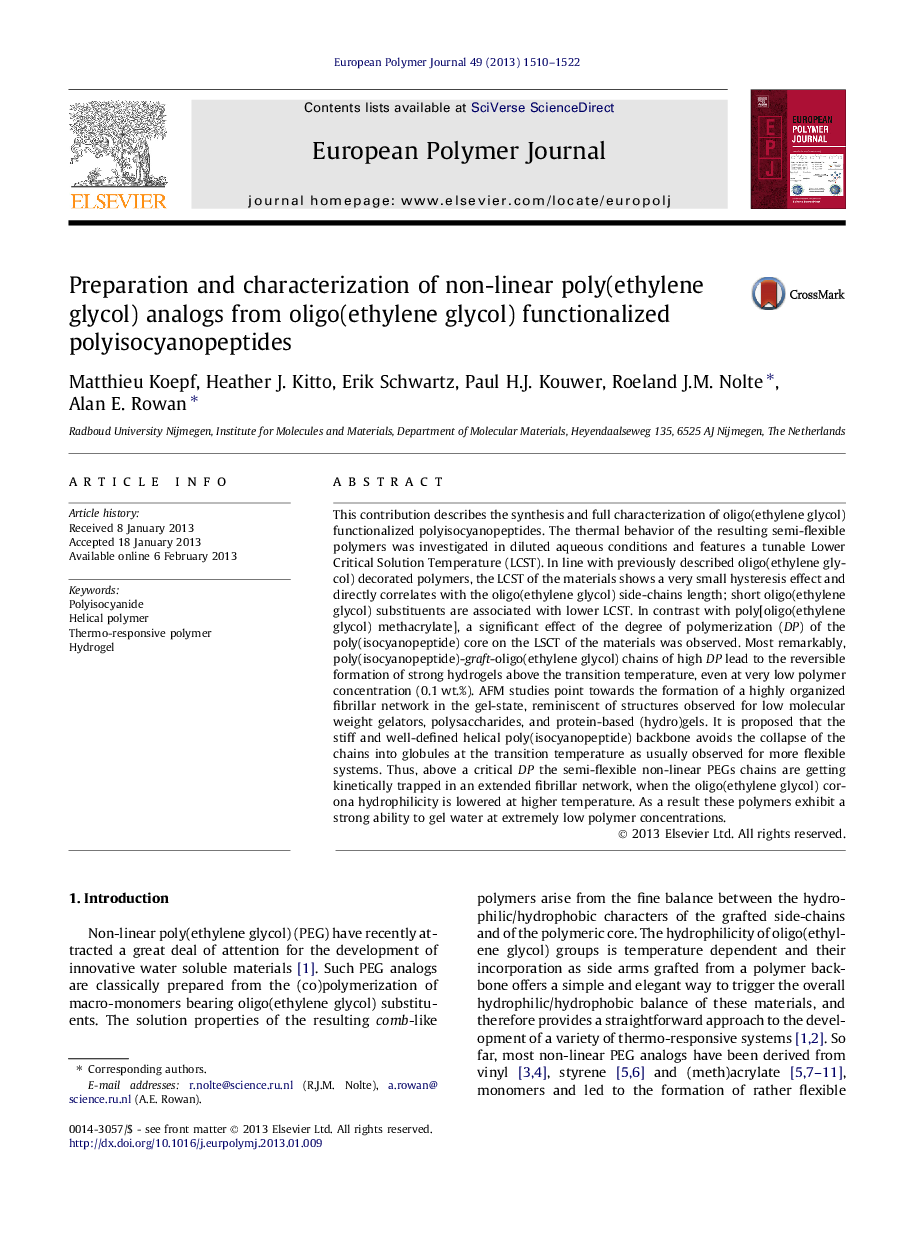| Article ID | Journal | Published Year | Pages | File Type |
|---|---|---|---|---|
| 10609531 | European Polymer Journal | 2013 | 13 Pages |
Abstract
This contribution describes the synthesis and full characterization of oligo(ethylene glycol) functionalized polyisocyanopeptides. The thermal behavior of the resulting semi-flexible polymers was investigated in diluted aqueous conditions and features a tunable Lower Critical Solution Temperature (LCST). In line with previously described oligo(ethylene glycol) decorated polymers, the LCST of the materials shows a very small hysteresis effect and directly correlates with the oligo(ethylene glycol) side-chains length; short oligo(ethylene glycol) substituents are associated with lower LCST. In contrast with poly[oligo(ethylene glycol) methacrylate], a significant effect of the degree of polymerization (DP) of the poly(isocyanopeptide) core on the LSCT of the materials was observed. Most remarkably, poly(isocyanopeptide)-graft-oligo(ethylene glycol) chains of high DP lead to the reversible formation of strong hydrogels above the transition temperature, even at very low polymer concentration (0.1Â wt.%). AFM studies point towards the formation of a highly organized fibrillar network in the gel-state, reminiscent of structures observed for low molecular weight gelators, polysaccharides, and protein-based (hydro)gels. It is proposed that the stiff and well-defined helical poly(isocyanopeptide) backbone avoids the collapse of the chains into globules at the transition temperature as usually observed for more flexible systems. Thus, above a critical DP the semi-flexible non-linear PEGs chains are getting kinetically trapped in an extended fibrillar network, when the oligo(ethylene glycol) corona hydrophilicity is lowered at higher temperature. As a result these polymers exhibit a strong ability to gel water at extremely low polymer concentrations.
Related Topics
Physical Sciences and Engineering
Chemistry
Organic Chemistry
Authors
Matthieu Koepf, Heather J. Kitto, Erik Schwartz, Paul H.J. Kouwer, Roeland J.M. Nolte, Alan E. Rowan,
